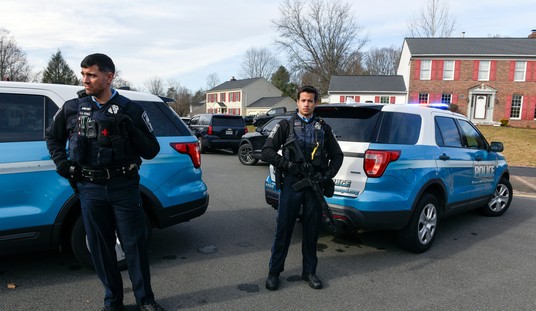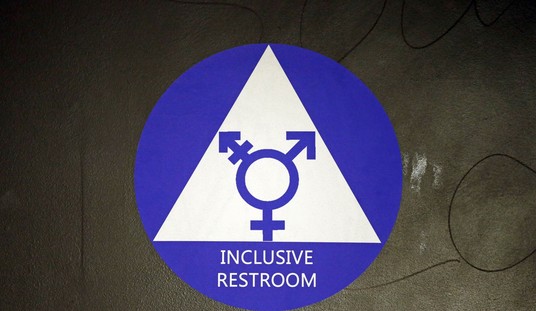The Numbers Lie; If You Don’t Speak Their Language
When breaking news includes an earthquake far off, a strange calm settles over the newsroom. Graphics roll in, while the weatherman changes shirts to become a part-time geologist. There's a bright red dot that pulses off the coast of a country that most Americans couldn't point to on a map, while the number flashing is 8.7.
There's zero reference for the average person, so they simply scroll past it.
Not because they don't care, not exactly. Quite simply, 8.7 means nothing to the average person. That number might as well be the price of a gallon of gas in Europe or even the rating of a documentary they'll never watch. It's simply a number. Right?
Well, that's the problem: That number should stiffen your spine, because when our Earth registers an earthquake at 8.7 on the Richter scale, it's not asking for attention: It's issuing a warning. The kind that doesn't come with a follow-up survey after you press four when listening to your menu options.
Sadly, these kinds of numbers usually arrive with bodies, not press conferences.
What Happened Off Kamchatka Wasn’t Just a Quake
At roughly 1:35 PM local time on July 29, 2025, our Earth's crust buckled beneath the Pacific near Russia's Kamchatka Peninsula. An earthquake struck the region, measuring 8.7, and triggering tsunami alerts in dozens of languages, prompting evacuations from Tokyo to Anchorage. Coastal towns throughout the Ring of Fire reacted to sirens, prompting evacuations. Planes were grounded, people moved inland, clutching children and memorabilia, unsure if they were heading for safety or simply delaying their fate.
Ocean waves over 13 feet hit facilities off the coast. A single school's gymnasium collapsed, and buildings in Petropavlovsk-Kamchatsky suffered structural fractures.
Still, thank God, no deaths were reported.
Was luck involved? Definitely, but make no mistake: The energy released was the stuff of extinction-level events. The Richter scale doesn't do the numbers justice, unless you're able to translate its language.
The Richter Scale Is Not a Ruler. It’s a Multiplier.
It's at this point that eyes glaze over.
The Richter scale isn't measured in scales we visualize. It's measured in orders of magnitude, meaning every full number increase represents not a linear bump, but a logarithmic leap.
Putting it in perspective:
- A 6.0 shakes the ground 10 times harder than a 5.0
- A 7.0? 100 times harder
- An 8.0? Now you’re at 1,000 times the amplitude
- An 8.7 quake is more than 5,000 times the ground movement of a 6.0 and unleashes over 200,000 times the energy
Still sounds like math? Well, let's try explaining it another way.
The Stereo Analogy: Why That Dial Matters
Think of the Richter scale like your stereo's volume knob, except instead of a stereo, this knob controls the Earth itself. Crank it from 1 to 2, and the stereo becomes louder. Now, let's dial it from 2 to 3, and we're blowing out speakers.
From 5 to 6? Windows shatter. By the time you reach 8.7, the stereo isn't just loud, it's throwing itself across the room.
Consider this: If a quake measuring 5.0 equals a neighbor slamming their car door, then an 8.7 is a freight train derailing through your living room.
The worst part? There's no such thing as a remote control, mute button, or off switch. The only thing that exists are aftershocks.
Energy in Real Terms: Try 2,000 Hiroshima Bombs
Let's try to understand what an earthquake measuring 8.7 releases roughly 45 million tons of TNT. That's MORE than 2,000 Hiroshima bombs.
Let's think about that for a second.
People lose their minds over a house fire or a power outage. In this case, the Earth screamed across the Pacific with the force of a small nuclear war.
Somehow, because it happened off the coast of Kamchatka, most Americans simply shrug.
But Kamchatka Got Lucky. Here’s Why
In geology, there's an unwritten rule that the Earth doesn't care who is standing where. The Earth doesn't aim, but when it strikes, geography and timing determine the casualty list.
Kamchatka was lucky for three reasons:
- The quake was offshore, reducing urban impact.
- The region is sparsely populated, with natural barriers that absorb some of the force.
- Early warning systems were effective, giving people time to evacuate.
Comparing these results to what happened in Japan in 2011, when a 9.0 quake triggered a tsunami, killing over 15,000 people while causing the Fukushima nuclear disaster.
We see the same scale, Pacific Rim, but a totally different cost.
Earthquake History Has No Patience for Repeats
Kamchatka has a history of disasters. In 1952, the peninsula experienced a 9.0-magnitude earthquake, flattening coastal villages while generating tsunami waves that reached as far as Hawaii, an event that killed thousands.
Stepping back in time, the 1707 Hōei Japanese earthquake shook with an estimated magnitude of 8.6 to 8.7, devastating the cities of Kyoto and Osaka, as well as the surrounding regions.
Tsunamis followed the quake, crops failed, and entire fishing villages vanished beneath the waves, leaving nothing behind.
Keep in mind one thing: there were no early warning systems at the time. There were no seismic networks or instant alerts; there was just trembling, then silence.
Our tools today give us arrogance and the belief that we can tame what we barely understand.
Americans Still Don’t Understand the Richter Scale
Pretending is long past discarded.
The idiotic left has turned natural disasters into clickbait. If a hurricane doesn't point to Miami or a fire doesn't torch Malibu, the needle barely moves. The Richter scale, despite its scientific basis, might as well be a ski slope difficulty rating for how seriously people take it.
Those same people who can tell you the caloric count of their lunch and the win-loss record of their fantasy football team still consider an 8.7 quake "kinda bad."
What happens if an 8.7 struck Los Angeles? The Richter scale wouldn't be needed. Instead, we'd need an endless supply of body bags and a national week of mourning. We'd see the difference between abstract headlines and concrete catastrophe.
It’s Not a Science Problem. It’s a Humility Problem.
The reason we downplay earthquakes is the same reason we ignore history, morality, and the apparent collapse of certain American cities: We don't think the rules apply to us.
We build glass towers on fault lines, over creeks, while fracking beneath schools, while tunneling beneath cities. When the Earth shakes, we blame it for not warning us.
The reminder Kamchatka gives is painfully simple: This isn't our planet, we're living on borrowed land. When the lease is up, there is no negotiating the terms.
Why This Quake Matters More Than You Think
The Kamchatka quake avoided a large-scale tragedy. This time. However, the 8.7 event wasn't just an earthquake; it was a rehearsal for something more significant. One day, the same energy will be released near San Francisco, Tokyo, Manila, or Santiago. Will be released, not if. And it's only a matter of when.
Treating this as a curiosity instead of a cautionary tale, every crushed building and unburied body comes next.
Here's the ugly truth: Natural disasters aren't the only thing that kills people; Apathy does, too.
Final Thoughts
The Richter scale isn't a scoreboard; it's a sentence, written in seismographic ink, read in crushed concrete, falling within shattered bones.
An 8.7 isn't simply a mathematical abstraction; it's its own monster without a face and conscience, living beneath every inch of land called home.
The next time you see that number, don't scroll past it: Understand it. Feel it. Remember Kamchatka, then prepare accordingly.
Because the next time our Earth clears its throat, you'd better pray it isn't your city she's calling.










